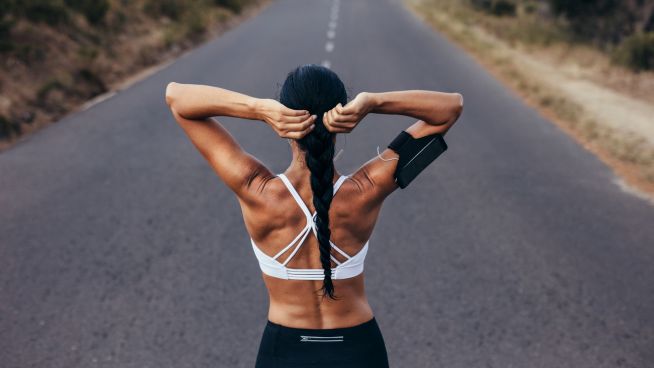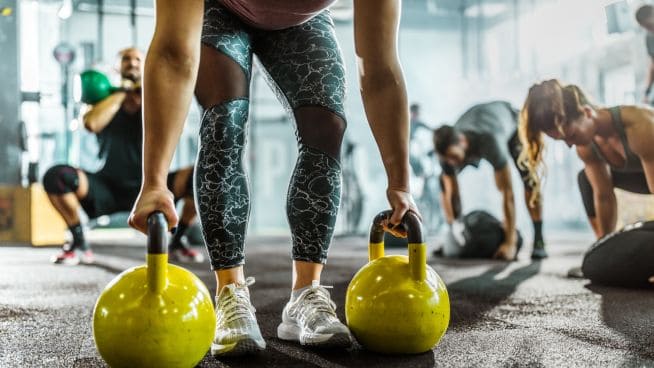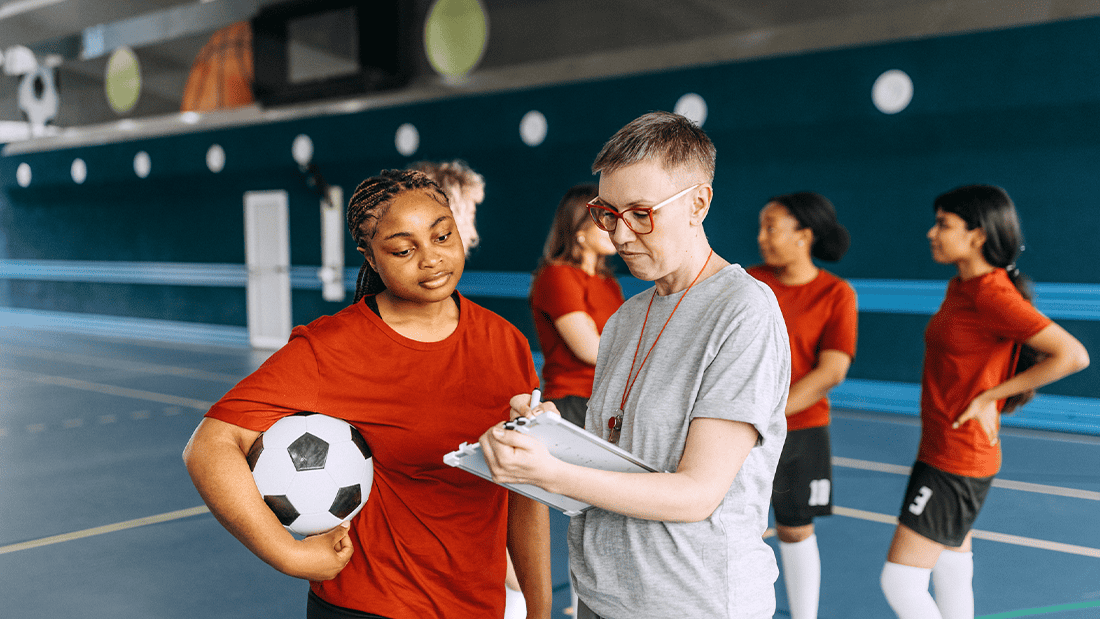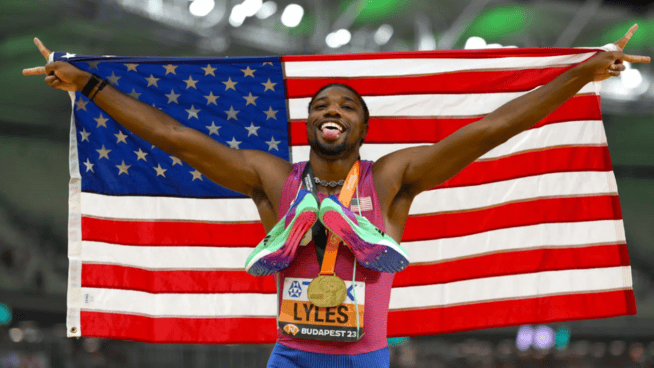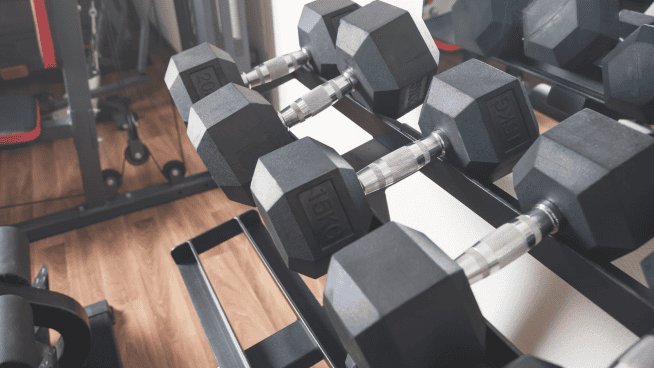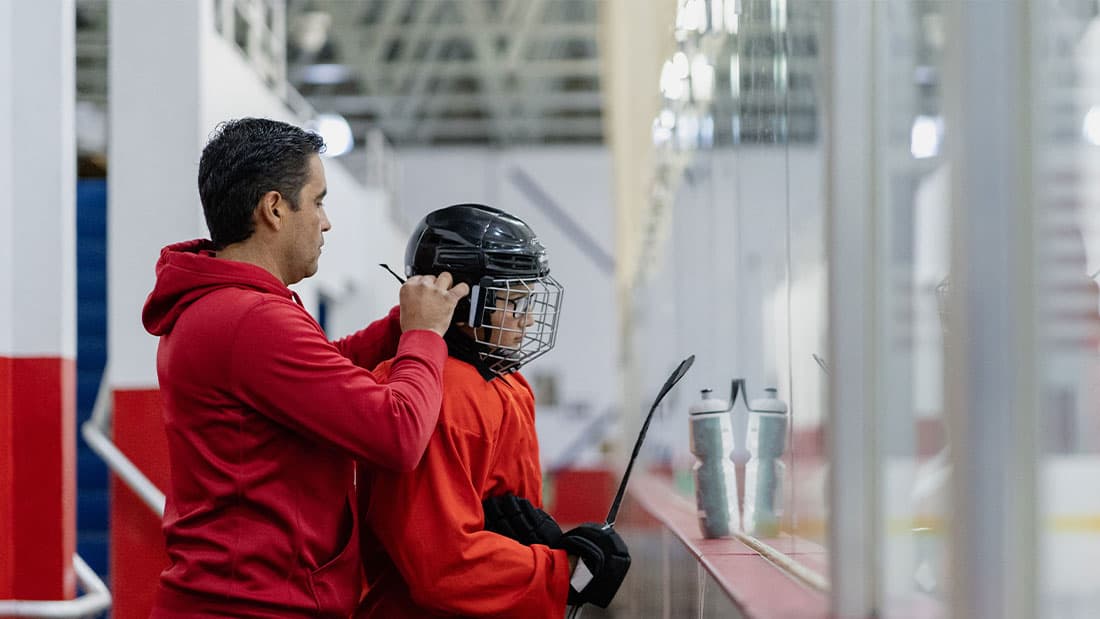Use This 4-Part Strength Training Strategy to Finally Dunk a Basketball
![]()
Learning how to dunk a basketball isn’t just a matter of lowering the rim in your driveway court and pretending to be LeBron James, Vince Carter or Michael Jordan. To improve your chances of slamming one down on a regulation hoop—unless you’re already over 6-feet-10—you’ve got to train for strength.
RELATED: How to Dunk a Basketball
At the high school where I am employed, I had the pleasure of working with Andrew Landini, who is now playing basketball at Adrian College in Michigan. During our few short months together, Andrew, who is listed at 6-feet tall, was able to dunk his first basketball.
RELATED: Start Dunking With This 2-Day Program
These are some things Andrew and I worked on that can strengthen your body and improve your chances of dunking.
Hamstrings and Glutes
In a vertical jump, the hamstrings and glutes work together to extend the hips. Building these muscles is imperative for improving your hops.
We trained these muscles with Squats, Romanian Deadlifts and Trap Bar Deadlifts
Heavier sets of 5-8 work best.
RELATED: How to Dunk This Year
Core and Low Back
All stability stems from the core, and building better stability dramatically improves the amount of weight you can move. A strong core is critical for keeping your torso and hips erect, which translates to more power off the ground.
We trained these muscles with Back Extensions, Bird Dogs (in push-up position) and Hanging Leg Raises
Do slow, controlled reps ranging from 10 to 15 per set.
Single-Leg Strength
Sometimes we dunk off two feet, but more often, we dunk off one foot. Unilateral strength is an important piece of any strength and conditioning program. Not only does it build strength, it also helps with balance and coordination, making it imperative for dunking.
We trained single-leg strength with Bulgarian Split Squats, Skater Jumps and TRX Pistol Squats.
Use moderate weights with sets of 8-12 per leg.
Knee Jumps
Knee jumps are important because doing them properly requires tremendous hip extension power. They replicate a standing vertical jump without the calf component.
To perform a Knee Jump, kneel down on the floor with your feet pointed and sit your weight back on your heels. Using arm swing, reach up, extend your hips and land in an athletic power position (hips above knees).
Sets of 4 work best.
Perfect these movements, and you will ultimately be ready to dunk a basketball.
RECOMMENDED FOR YOU
MOST POPULAR
Use This 4-Part Strength Training Strategy to Finally Dunk a Basketball
![]()
Learning how to dunk a basketball isn’t just a matter of lowering the rim in your driveway court and pretending to be LeBron James, Vince Carter or Michael Jordan. To improve your chances of slamming one down on a regulation hoop—unless you’re already over 6-feet-10—you’ve got to train for strength.
RELATED: How to Dunk a Basketball
At the high school where I am employed, I had the pleasure of working with Andrew Landini, who is now playing basketball at Adrian College in Michigan. During our few short months together, Andrew, who is listed at 6-feet tall, was able to dunk his first basketball.
RELATED: Start Dunking With This 2-Day Program
These are some things Andrew and I worked on that can strengthen your body and improve your chances of dunking.
Hamstrings and Glutes
In a vertical jump, the hamstrings and glutes work together to extend the hips. Building these muscles is imperative for improving your hops.
We trained these muscles with Squats, Romanian Deadlifts and Trap Bar Deadlifts
Heavier sets of 5-8 work best.
RELATED: How to Dunk This Year
Core and Low Back
All stability stems from the core, and building better stability dramatically improves the amount of weight you can move. A strong core is critical for keeping your torso and hips erect, which translates to more power off the ground.
We trained these muscles with Back Extensions, Bird Dogs (in push-up position) and Hanging Leg Raises
Do slow, controlled reps ranging from 10 to 15 per set.
Single-Leg Strength
Sometimes we dunk off two feet, but more often, we dunk off one foot. Unilateral strength is an important piece of any strength and conditioning program. Not only does it build strength, it also helps with balance and coordination, making it imperative for dunking.
We trained single-leg strength with Bulgarian Split Squats, Skater Jumps and TRX Pistol Squats.
Use moderate weights with sets of 8-12 per leg.
Knee Jumps
Knee jumps are important because doing them properly requires tremendous hip extension power. They replicate a standing vertical jump without the calf component.
To perform a Knee Jump, kneel down on the floor with your feet pointed and sit your weight back on your heels. Using arm swing, reach up, extend your hips and land in an athletic power position (hips above knees).
Sets of 4 work best.
Perfect these movements, and you will ultimately be ready to dunk a basketball.
[cf]skyword_tracking_tag[/cf]






